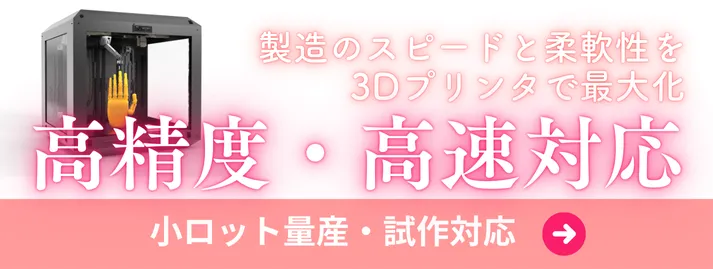- お役立ち記事
- Basics and applications of decking for beginners in the manufacturing industry
月間76,176名の
製造業ご担当者様が閲覧しています*
*2025年3月31日現在のGoogle Analyticsのデータより

Basics and applications of decking for beginners in the manufacturing industry

Decking is an essential aspect of the manufacturing industry, and understanding its basics can significantly impact your operations.
Whether you are new to the industry or looking to broaden your knowledge, this guide will walk you through the fundamental aspects of decking, its applications, and key considerations to keep it optimized in your manufacturing processes.
By the end of this article, you should have a solid grasp of decking and how you can apply it effectively in various industrial settings.
目次
What is Decking?
Decking refers to the material or platform used in manufacturing settings to provide a stable and uniform surface.
It can be made from various materials like wood, metal, or composite, and is designed to support different types of equipment, products, or workers.
In the manufacturing industry, decking can be found in storage areas, walkways, and production lines, ensuring safety, efficiency, and stability.
Types of Decking Materials
Understanding the different types of decking materials can help you choose the right one for your specific needs:
1. Wood Decking
Wood decking is a traditional choice that offers durability and a natural appearance.
It is relatively easy to install and can be sourced from various types of timber to suit different applications.
However, it requires regular maintenance to prevent issues like rot and warping.
2. Metal Decking
Metal decking, such as steel or aluminum, provides superior strength and load-bearing capacity.
It is highly resistant to wear and tear, making it suitable for heavy-duty applications.
Metal decking is also less prone to deformation under heavy loads and typically requires less maintenance than wood.
However, it can be more expensive and may require specialized installation.
3. Composite Decking
Composite decking is made from a blend of materials like plastic and wood fibers, offering a balance between the durability of metal and the aesthetics of wood.
It is resistant to moisture, insects, and decay, making it a low-maintenance option.
Composite decking can be cost-effective over the long term due to its durability and minimal upkeep requirements.
Applications of Decking in Manufacturing
Decking has a wide range of applications in the manufacturing industry, each serving a specific purpose to enhance functionality and safety:
1. Storage Areas
In storage areas, decking provides a stable and level surface for stacking goods and materials.
It helps in organizing and maximizing the efficiency of storage spaces by allowing safe and secure placement of items.
Good decking reduces the risk of accidents related to uneven or unstable surfaces, contributing to a safer work environment.
2. Production Lines
Decking is crucial in production lines where precision and stability are paramount.
A well-designed decking platform ensures that machinery and workers have a stable footing, which is essential for high-quality output and consistent production rates.
3. Walkways
Decking is often used to create walkways in manufacturing plants, providing safe paths for workers to navigate the facility.
These walkways help in maintaining order and preventing accidents, especially in areas with heavy machinery or hazardous materials.
Key Considerations for Decking
When choosing and installing decking in your manufacturing facility, there are several key considerations to keep in mind:
1. Load-Bearing Capacity
The decking material you choose must be capable of supporting the weight of the equipment, products, and workers.
Calculate the maximum load that the decking will need to support and choose a material that meets or exceeds this requirement.
2. Environmental Factors
Consider the environmental conditions of your manufacturing facility, such as humidity, temperature, and exposure to chemicals.
Certain materials may be more suitable than others depending on these factors.
For example, metal decking might be ideal for high-temperature environments, while composite decking could be better for areas with high moisture levels.
3. Maintenance and Longevity
Different decking materials require different levels of maintenance.
Understand the maintenance requirements of your chosen material and ensure that your team is prepared to perform the necessary upkeep to extend the decking’s lifespan.
Composite and metal decking typically require less maintenance compared to wood.
4. Safety Features
Safety should be a top priority when installing decking in a manufacturing facility.
Look for features like anti-slip surfaces, adequate drainage, and edge protection to minimize the risk of accidents.
Proper installation and regular inspections are also crucial in maintaining a safe working environment.
How to Install Decking
Installing decking in a manufacturing setting requires careful planning and adherence to safety standards:
1. **Planning**: Outline the area where decking will be installed and determine the load requirements.
Ensure you have all the necessary materials and tools.
2. **Preparation**: Clear the area of debris and level the ground.
If installing on an existing surface, ensure it is clean and free of damage.
3. **Installation**: Begin by laying out the framework, ensuring it is level and secure.
Attach the decking material according to the manufacturer’s instructions, using appropriate fasteners.
4. **Inspection**: After installation, thoroughly inspect the decking to ensure it is stable and safe.
Correct any issues immediately to prevent future problems.
5. **Regular Maintenance**: Implement a maintenance schedule to keep the decking in optimal condition.
Conclusion
Decking is a crucial component in the manufacturing industry, offering a stable and safe platform for various applications.
By understanding the different types of decking materials and their respective advantages, you can make informed decisions that enhance the efficiency and safety of your facility.
Consider factors like load-bearing capacity, environmental conditions, maintenance requirements, and safety features to select and install the right decking for your needs.
With proper planning and maintenance, your decking can provide long-term benefits, contributing to a more productive and secure manufacturing environment.
 資料ダウンロード
資料ダウンロード
QCD管理受発注クラウド「newji」は、受発注部門で必要なQCD管理全てを備えた、現場特化型兼クラウド型の今世紀最高の受発注管理システムとなります。
 ユーザー登録
ユーザー登録
受発注業務の効率化だけでなく、システムを導入することで、コスト削減や製品・資材のステータス可視化のほか、属人化していた受発注情報の共有化による内部不正防止や統制にも役立ちます。
 NEWJI DX
NEWJI DX
製造業に特化したデジタルトランスフォーメーション(DX)の実現を目指す請負開発型のコンサルティングサービスです。AI、iPaaS、および先端の技術を駆使して、製造プロセスの効率化、業務効率化、チームワーク強化、コスト削減、品質向上を実現します。このサービスは、製造業の課題を深く理解し、それに対する最適なデジタルソリューションを提供することで、企業が持続的な成長とイノベーションを達成できるようサポートします。
 製造業ニュース解説
製造業ニュース解説
製造業、主に購買・調達部門にお勤めの方々に向けた情報を配信しております。
新任の方やベテランの方、管理職を対象とした幅広いコンテンツをご用意しております。
 お問い合わせ
お問い合わせ
コストダウンが利益に直結する術だと理解していても、なかなか前に進めることができない状況。そんな時は、newjiのコストダウン自動化機能で大きく利益貢献しよう!
(β版非公開)









